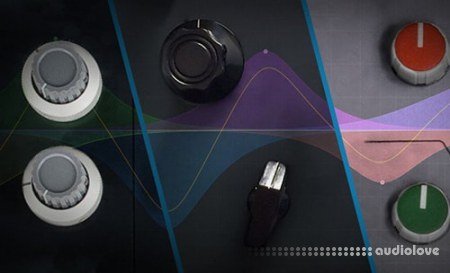PUREMIX Equalizer Strategy and Philosophy [TUTORiAL]

SYNTHiC4TE | 16 July 2017 | 735 MB
The most commonly used tool in an audio engineer's toolkit is the venerable equalizer (EQ). Over the years, EQs have become a powerful creative tool and the most fundamental mixing and mastering device every engineer has at their disposal.
In part 1 of the series, The Study of EQ Controls, Grammy winner Fab Dupont teaches you what each knob's function does, and in this tutorial, he dives even deeper to teach how and when to skillfully apply any type of EQ.
Learn tricks and techniques that will help form or refine the foundation of how you approach EQing your mixes and masters.
- The history of EQ choices and how they've evolved over the decades
- How to recognize the sonic differences between analog and digital EQs
- Learn to master the subtle differences between types of EQ and know when to best apply
- Compare several common EQ topologies including Pultec, Neve, SSL
- The classic boost + cut trick on the Pultec
- Strategies for using fully parametric EQs without getting lost in endless parameters
- Using multiple EQs to achieve a clear and focused mix that doesn't sound like mud
- How to compensate for the tone of pieces of gear with transformers, tubes, etc
- Find and eliminate frequencies, remove masks from your tracks for clearer and more powerful sounding mixes
- Should EQ come before or after compression? Learn to recognize which way is best suited for a mix
- How to hear subtle changes in tone to be sure the settings and techniques you're using are helping and not harming your mixes
By mastering these fundamental skills and techniques, you can keep your focus on the music, not the settings.
Subtitles are included
home page
In part 1 of the series, The Study of EQ Controls, Grammy winner Fab Dupont teaches you what each knob's function does, and in this tutorial, he dives even deeper to teach how and when to skillfully apply any type of EQ.
Learn tricks and techniques that will help form or refine the foundation of how you approach EQing your mixes and masters.
Over the course of this hour-long tutorial, Fab Dupont explains:
- The history of EQ choices and how they've evolved over the decades
- How to recognize the sonic differences between analog and digital EQs
- Learn to master the subtle differences between types of EQ and know when to best apply
- Compare several common EQ topologies including Pultec, Neve, SSL
- The classic boost + cut trick on the Pultec
- Strategies for using fully parametric EQs without getting lost in endless parameters
- Using multiple EQs to achieve a clear and focused mix that doesn't sound like mud
- How to compensate for the tone of pieces of gear with transformers, tubes, etc
- Find and eliminate frequencies, remove masks from your tracks for clearer and more powerful sounding mixes
- Should EQ come before or after compression? Learn to recognize which way is best suited for a mix
- How to hear subtle changes in tone to be sure the settings and techniques you're using are helping and not harming your mixes
By mastering these fundamental skills and techniques, you can keep your focus on the music, not the settings.
Subtitles are included
home page
Only registered users can see Download Links. Please or login.


No comments yet